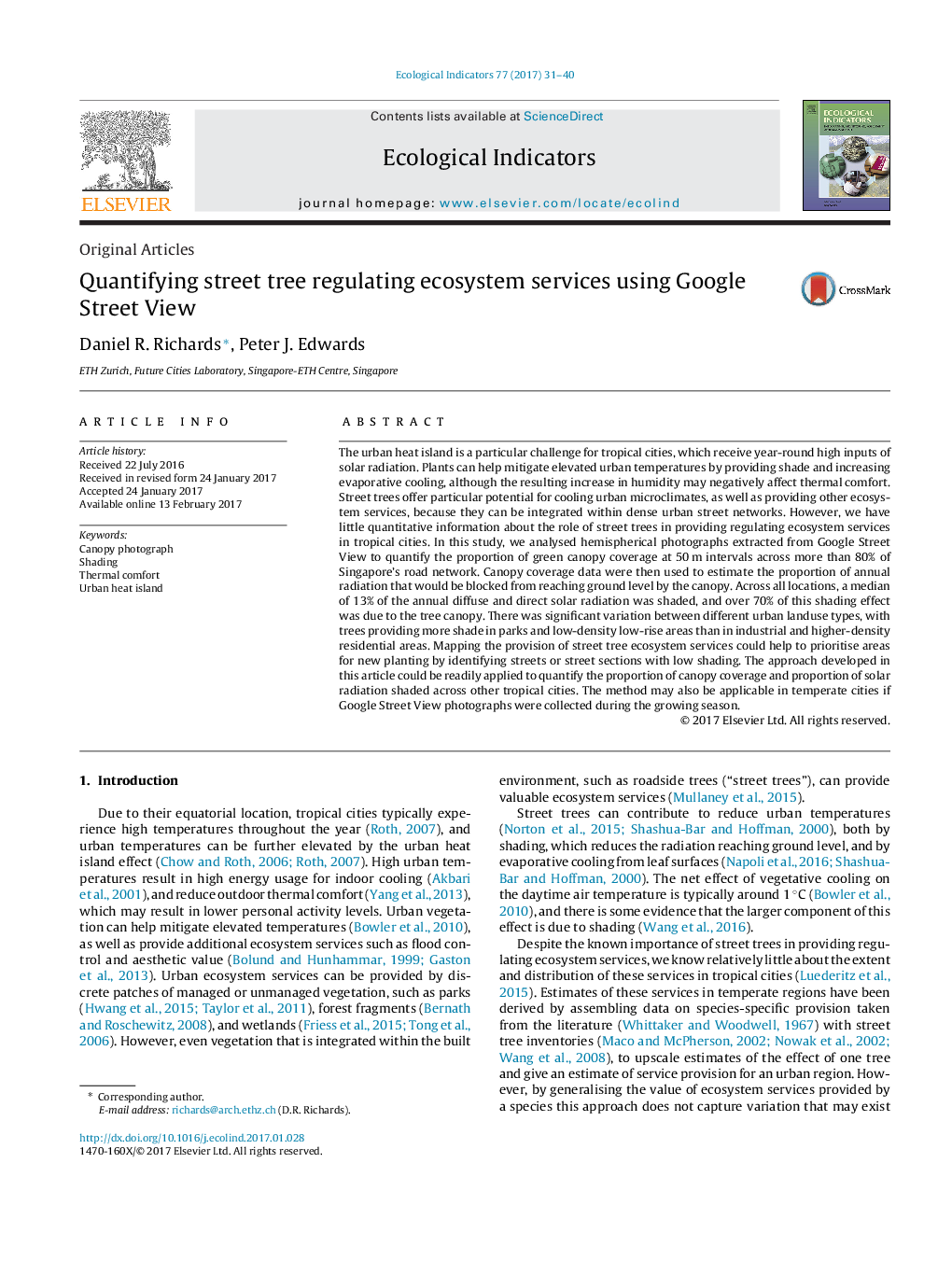| کد مقاله | کد نشریه | سال انتشار | مقاله انگلیسی | نسخه تمام متن |
|---|---|---|---|---|
| 5741707 | 1617125 | 2017 | 10 صفحه PDF | دانلود رایگان |

- Tree canopy cover was estimated from hemispherical photographs from Google Street View.
- Shading of solar radiation was estimated from canopy images using insolation data.
- Variation in canopy cover was mapped over more than 80% of Singapore's road network.
- Trees provided more shade in low-density than high-density residential areas.
The urban heat island is a particular challenge for tropical cities, which receive year-round high inputs of solar radiation. Plants can help mitigate elevated urban temperatures by providing shade and increasing evaporative cooling, although the resulting increase in humidity may negatively affect thermal comfort. Street trees offer particular potential for cooling urban microclimates, as well as providing other ecosystem services, because they can be integrated within dense urban street networks. However, we have little quantitative information about the role of street trees in providing regulating ecosystem services in tropical cities. In this study, we analysed hemispherical photographs extracted from Google Street View to quantify the proportion of green canopy coverage at 50Â m intervals across more than 80% of Singapore's road network. Canopy coverage data were then used to estimate the proportion of annual radiation that would be blocked from reaching ground level by the canopy. Across all locations, a median of 13% of the annual diffuse and direct solar radiation was shaded, and over 70% of this shading effect was due to the tree canopy. There was significant variation between different urban landuse types, with trees providing more shade in parks and low-density low-rise areas than in industrial and higher-density residential areas. Mapping the provision of street tree ecosystem services could help to prioritise areas for new planting by identifying streets or street sections with low shading. The approach developed in this article could be readily applied to quantify the proportion of canopy coverage and proportion of solar radiation shaded across other tropical cities. The method may also be applicable in temperate cities if Google Street View photographs were collected during the growing season.
Journal: Ecological Indicators - Volume 77, June 2017, Pages 31-40